To the chagrin of loanowners, falling prices and low interest rates make houses in many markets very affordable.

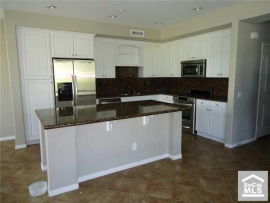
Irvine Home Address … 145 PATHWAY Irvine, CA 92618
Resale Home Price …… $425,000

and I'm not going back
into rags or in the hole
and our bruises are coming
but we will never fold
and I was your silver lining
as the story goes
I was your silver lining
but now I'm gold
Rilo Kiley — Silver Lining
Most articles on the housing market appear to be written as if everyone who reads them is a homeowner. Everything written about house prices going down is portrayed as bad and visa versa. Despite the fact that nearly 40% of the general population rents most articles are written as if renters are a lowly subclass not worthy of consideration and totally lacking a point of view.
Lower prices benefit renters who are waiting to buy. That is a benefit to 40% of the population, yet their story is never told. Even today's featured article is clearly aimed at homeowners. The author felt it necessary to point out to homeowners that there is another point of view. Some people are benefiting from the housing bust. Apparently, this is such an alien concept that it needs to be pointed out. This won't be news to regular readers of this blog.
For the young, there’s a silver lining in the housing bust
By Robert J. Samuelson, Published: May 8 
If you’re a 20-something or even younger, your economic future is at best clouded. Your taxes will almost certainly be higher than today’s; your public services (schools, police, sanitation, defense, scientific research) will almost certainly be lower. Paying for old people, covering rising health-care costs, repairing dilapidated roads and servicing government pensions and the huge federal debt will squeeze take-home pay. Is there any hope for economic gains?
We are also making college much more expensive for young people so they begin their working lives with massive debts. What little discretionary income they have will not support the entitled lives granted an earlier generation. Do We Owe Baby Boomers Their Imagined Home Equity for Retirement?
Well, yes — and from a surprising source. Housing. Say what?
Almost everyone considers the housing collapse a disaster, and it is.
His bias is openly stated.
Since 2007, roughly 8 million homes have gone into foreclosure. Housing prices, according to the widely cited Case-Shiller index, are down about 33 percent from their 2006 peaks. They’re still falling, albeit at a slower pace. In some cities (Atlanta, Cleveland, Las Vegas, Detroit, Phoenix), they’re at or below 2000 levels. Home sales are stunted, and construction is a quarter of its previous peak. Housing’s implosion retards the economic recovery. Aside from unemployed carpenters and real estate agents, there’s much unsold lumber, carpet and appliances.
But housing’s troubles may have a silver lining. If you’re a homeowner, the steep fall in prices is calamitous. But if you’re a future buyer, it’s a godsend. What we’re seeing is a massive wealth transfer from today’s older homeowners to tomorrow’s younger homeowners. From year-end 2006 to 2010, housing values fell $6.3 trillion, reports the Federal Reserve. Assuming there’s no sharp rebound in prices — a good bet — that’s $6.3 trillion the young won’t pay.
Look at how much less a family in Las Vegas now has to spend on housing. The median home price is back at 1995 levels when interest rates were north of 9%.

Affordability is the highest on record in Las Vegas, and it is likely to get even better as the crushing weight of inventory takes its toll.
Up to a point, the lower home prices merely deflate the artificial “bubble.” But there’s evidence that the declines transcend that. The National Association of Realtors routinely publishes a housing “affordability” index, which judges the ability of median families to buy the median-price home at prevailing interest rates. By this measure, existing homes are the most affordable since the index started in 1970.
Young buyers “will be able to enter the housing market at bargain prices,” argues NAR economist Lawrence Yun.
Finally, Lawrence Yun makes a statement that is not complete bullshit. His job will become much easier when reality begins to coincidentally mirror his spin and bullshit — and it will be a coincidence. He or his replacement will spin bullshit endlessly, and those times when their bullshit comes to pass will be an accident. Remember 2006?

When home prices again rise, increases will parallel income gains, meaning that the relative burden of housing costs will remain roughly stable, Yun says. He expects only modest increases in interest rates. (A rise of one percentage point — say, from 5 percent to 6 percent — on a $150,000 mortgage boosts the monthly payment about $95.)
He is clearly torn here. The standard line of NAr bullshit right now is that people need to hurry up and buy while interest rates are low. His realistic expectation of slowly rising interest rates doesn't convey the false sense of urgency that accompanies most NAr propaganda.

Falling real estate prices have also affected new homes. They’re getting smaller and less embellished, as they must. New homes typically sell at a 10 to 20 percent premium over comparable existing homes. If prices don’t fall, buyers won’t buy. From 1973 to 2007, the size of the average new home grew by about 50 percent, from 1,660 square feet to 2,521 square feet. By 2009, that was 2,438 square feet, with more declines expected.
“People have become much more value oriented,” says Jeff Mezger, chief executive of KB Home, a major builder. At the height of the boom, with cheap mortgage credit widely available, over-confident buyers selected five-bedroom homes with Jacuzzis and granite-top kitchen counters, he says. Now, buyers favor practical amenities: more kitchen cabinets and bigger closets.
KB Homes made the quickest and best adjustments to falling prices by retreating to their small standard offerings of years past. The housing bust has been very hard on the homebuilding industry. Nobody anticipated new construction taking out the previous low of 1992 and staying below this level for nearly 4 years. This will be remembered as the Great Homebuilding Depression by those who endure.
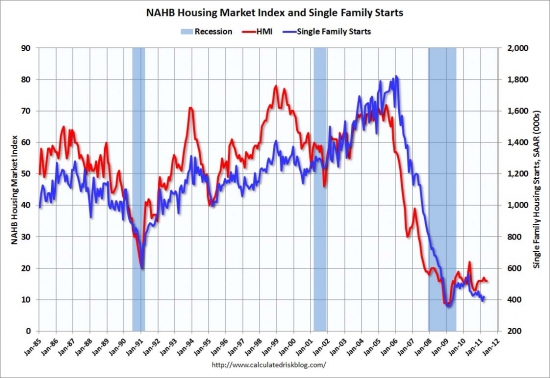
Prior to the housing bubble, smaller square footage used to demand a premium. The expensive kitchens and baths are required in a small studio unit as well as a large McMansion. When dollars per square foot began to rise as houses got larger, homebuilder incentives are to add as much inexpensive square footage in bedrooms, family rooms, great rooms and so on. Hence, we ended up with seas of McMansions. Until the sales price per square foot of SFDs falls below the sales prices per square foot of condos, the market has not reached a stable point, and McMansions will still be supplied in abundance.
We are, perhaps, at a historic juncture. The relentless expansion of home size since World War II — encouraged by federal subsidies, including the mortgage-interest tax deduction — arguably resulted in many Americans being “over-housed.” Homes grew beyond what was “needed” or could even be enjoyed. The reason they kept expanding, Cornell economist Robert Frank has argued, was social competition. People want to be in the “best” neighborhoods with the “best” schools, and these neighborhoods have ever-larger homes. Somewhat smaller homes, Frank contends, won’t make people less happy.
Useless square footage is a thing of the past. Now that people have to pay for their housing with wage income and HELOC supplementation is not forthcoming, buyers will become conscious of every square foot. Bigger will not mean better. During the housing bubble the most borrowers over-extended, the more they were rewarded with HELOC booty and the illusion of price decline immunity. The incentives were all wrong. Now only the kool aid remains.

If the housing collapse mutes this self-defeating syndrome, the main beneficiaries will be today’s young. Their homes will be somewhat cheaper and smaller; their operating costs (mainly utilities) will be somewhat lower. The sacrifices in living standards will be barely noticeable, and the savings — housing, after all, represents most families’ largest expense — will provide some relief from higher taxes and health costs.

Caveats apply. Housing markets are famously local; what’s true in one won’t be true in another. Moreover, the housing bust still looms large. The young are staying or returning home; new household formations are less than half of previous levels. Mortgage credit is constricted. Private lenders, once promiscuous with loans, are now prudish. Fannie Mae and Freddie Mac are in a state of transition — to what, no one knows. The price adjustment, especially for new homes, is incomplete. Unless these problems are overcome, housing construction will remain depressed. Eventually, the scarcity of homes would push prices up.
But crises pass and have unintended consequences. The young just might catch a much-needed break from this one.
And so will patient IHB readers.
Your time will soon be at hand. IMO, the steep drop in house prices will continue through the end of the year, and it marks the opening of the window of opportunity to find better properties at lower prices. Sellers, mostly banks, will be more abundant and more motivated, particularly as prices decline. The patient will be able to find good deals. Everyone needs to be prepared for a long drawn-out bottoming process with yearly false spring rallies and late-year declines. One of the next few spring rallies will be an enduring one, but there is no way to know which one it will be. It isn't very likely to be 2011, and 2012 is looking even more suspect. Perhaps January to March of 2013 will mark the bottom tick of prices for coveted Irvine SFRs. Perhaps it will be even later.
For me, those are reasons to be bullish. But I am a contrarian, and I won't mind an extended bottoming period to carefully select the property or properties I want to own. If the bottom drags out for five years and provides a window where new owner-occupants find great deals, and I can acquire cashflow positive real estate, I think that is a great thing.
Past Peak Buyer
I don't have a category for the owners of today's featured property. They bought in December of 2007 when prices were just beginning their steep drop. Perhaps this looked like a relative bargain at the time, but since the builders on the Ranch were not lowering their prices in late 2007, they were one of the few sales that took place as down payments skyrocketed. Needless to say, they weren't readers of the blog back then.

These owners put 10% down, and took out a purchase money HELOC for 10% of the price. If they didn't use it, it may retain its non-recourse status. If they did use this HELOC, their recourse protections are gone, and their loss is doubled. In either case, they likely didn't see this purchase as a fast track to losing their money and trashing their credit. By purchasing when they did, they got to experience the steepest drop the market had to offer, at least until now.


Irvine House Address … 145 PATHWAY Irvine, CA 92618 ![]()
Resale House Price …… $425,000
House Purchase Price … $627,500
House Purchase Date …. 12/6/2007
Net Gain (Loss) ………. ($228,000)
Percent Change ………. -36.3%
Annual Appreciation … -11.1%
Cost of House Ownership
————————————————-
$425,000 ………. Asking Price
$14,875 ………. 3.5% Down FHA Financing
4.59% …………… Mortgage Interest Rate
$410,125 ………. 30-Year Mortgage
$90,001 ………. Income Requirement
$2,100 ………. Monthly Mortgage Payment
$368 ………. Property Tax (@1.04%)
$233 ………. Special Taxes and Levies (Mello Roos)
$89 ………. Homeowners Insurance (@ 0.25%)
$472 ………. Private Mortgage Insurance
$418 ………. Homeowners Association Fees
============================================
$3,680 ………. Monthly Cash Outlays
-$339 ………. Tax Savings (% of Interest and Property Tax)
-$531 ………. Equity Hidden in Payment (Amortization)
$26 ………. Lost Income to Down Payment (net of taxes)
$73 ………. Maintenance and Replacement Reserves
============================================
$2,908 ………. Monthly Cost of Ownership
Cash Acquisition Demands
——————————————————————————
$4,250 ………. Furnishing and Move In @1%
$4,250 ………. Closing Costs @1%
$4,101 ………… Interest Points @1% of Loan
$14,875 ………. Down Payment
============================================
$27,476 ………. Total Cash Costs
$44,500 ………… Emergency Cash Reserves
============================================
$71,976 ………. Total Savings Needed
Property Details for 145 PATHWAY Irvine, CA 92618
——————————————————————————
Beds: 3
Baths: 2
Sq. Ft.: 1700
$250/SF
Property Type: Residential, Condominium
Style: Two Level
View: Hills, Mountain
Year Built: 2007
Community: Portola Springs
County: Orange
MLS#: P775467
Source: SoCalMLS
Status: Active
——————————————————————————
Beautiful home located in the village of PORTOLA SPRINGS and in the IRVINE SCHOOL DISTRICT. This home is located at END-UNIT. Light bright and beautiful kitchen features GRANITE COUNTERTOPS and STAINLESS STEEL appliances with plenty of cabinet and counter space. 10 years builder warranty. Enjoy association POOL, PARK with basketball court, two tennis courts and a recreation center. Easy access to FWY and TALL ROAD. /////MUST SEE!!!/////
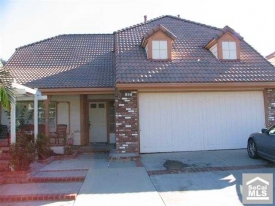
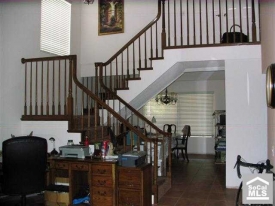



 One of my former co-workers is a deeply moral man. He views life rather simply, and most issues to him are either black or white. I watched him deal with the struggles of our declining incomes as the real estate bust dragged on, yet he remained committed to paying his mortgage on a house in Riverside County that declined about 50% in value. He was paying $3,200 per month for a property he could rent for $1,800.
One of my former co-workers is a deeply moral man. He views life rather simply, and most issues to him are either black or white. I watched him deal with the struggles of our declining incomes as the real estate bust dragged on, yet he remained committed to paying his mortgage on a house in Riverside County that declined about 50% in value. He was paying $3,200 per month for a property he could rent for $1,800.







.jpg)


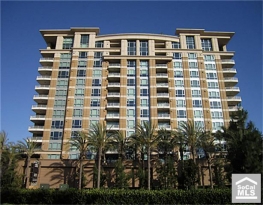





.png)












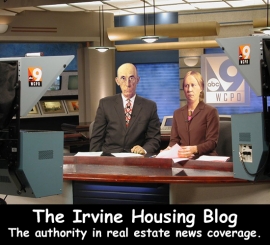
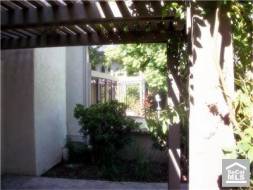
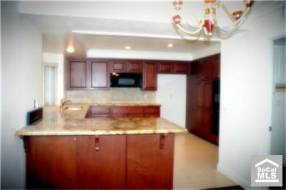





 Those are the standard reasons for strategic default we have discussed at length on this blog. They are good reasons. Anyone facing those circumstances will benefit financially from walking away. That's why strategic default is so common and will become the norm before this crisis has past.
Those are the standard reasons for strategic default we have discussed at length on this blog. They are good reasons. Anyone facing those circumstances will benefit financially from walking away. That's why strategic default is so common and will become the norm before this crisis has past.






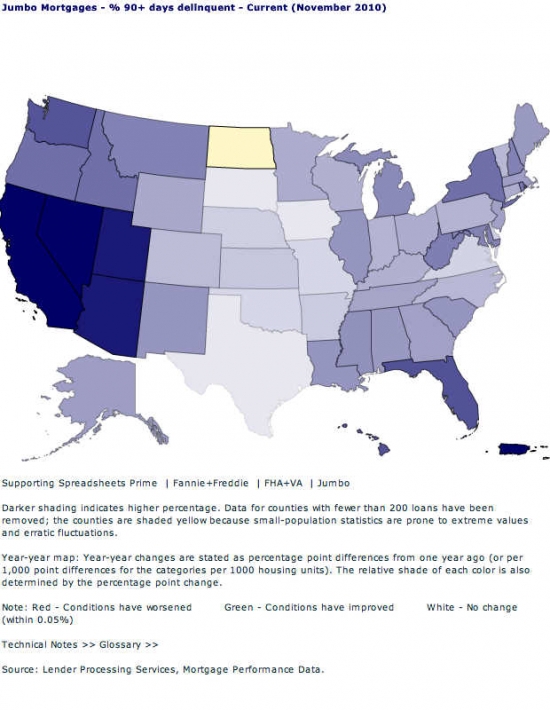



 Large master bedroom with huge views over the city of Irvine and a spacious bathroom with separate shower and tub, double sinks and walk in closet. There is a separate laundry room, off the huge kitchen with gorgeous granite counter tops and new dishwasher and a private outside patio just right for BBQ's and a quiet morning coffee and paper reading! New upgraded carpet and padding throughout and Italian porcelain tile on the bathroom and kitchen floors. New fittings and fixtures in wetbar and bathrooms and kitchen, just move in!! What a FIND!
Large master bedroom with huge views over the city of Irvine and a spacious bathroom with separate shower and tub, double sinks and walk in closet. There is a separate laundry room, off the huge kitchen with gorgeous granite counter tops and new dishwasher and a private outside patio just right for BBQ's and a quiet morning coffee and paper reading! New upgraded carpet and padding throughout and Italian porcelain tile on the bathroom and kitchen floors. New fittings and fixtures in wetbar and bathrooms and kitchen, just move in!! What a FIND! 












